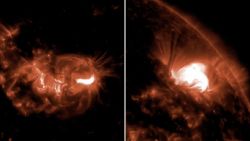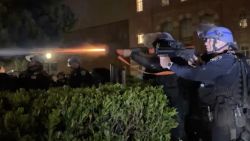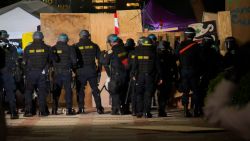Officials are warning more Oregon residents should prepare to evacuate as the Bootleg Fire scorches more than 340,000 acres, with a national fire official warning it could take a major weather event to subdue the flames.
There are currently 80 large wildfires raging in 13 states across the US, burning more than 1.1 million acres, mostly in western states, according to the National Interagency Fire Center (NIFC). Montana has reported the most large wildfires with 18, and Idaho is close behind with 17, the NIFC said. Nearly 20,000 wildland firefighters and personnel are assigned to the 80 large wildfires currently burning across the United States.
After Oregon, the state’s with the most acres burned are California, Idaho and then Alaska.
Oregon’s Bootleg fire, which has been burning in the Fremont-Winema National Forest along the Oregon and California border since July 6. As of Monday morning, the fire has burned 303,791 acres with a containment of 25%, according to data from InciWeb, the US clearinghouse for wildfire information.
The Bootleg Fire has created conditions so extreme that firefighters have had to seek safety for the ninth day in a row. According to a Monday update from Inciweb, firefighters were forced to find safety zones and wait for opportunities to re-engage in the battle
“We are running firefighting operations through the day and all through the night,” said Joe Hessel, incident commander. “This fire is a real challenge, and we are looking at sustained battle for the foreseeable future.”
Hot temperatures have been making the blaze harder to tackle. “Weather’s really against us. It’s going to be hot, it’s going to be dry and air’s going to be unstable which helps the heat raise faster, which brings in more air. All things that are negative for firefighters and positive for fire. So it’s going to be a real battle today,” Operations Section Chief John Flannigan said during his Sunday morning briefing.
Fire spokesperson Katy O’Hara told CNN that weather conditions need to change in order for the fire to be extinguished.
“We are experiencing extremely dry conditions with record to near record temperatures. Conditions on the ground due in part to the historic drought have accelerated the fire season. The combination of the weather and fuel conditions have led to rapid growth of the fire,” O’Hara said.
“The scope and scale of the Bootleg Fire will require a season ending weather event such as a significant storm that is either widespread wetting rain or snow, which in southern Oregon typically occurs in the late fall,” she said.
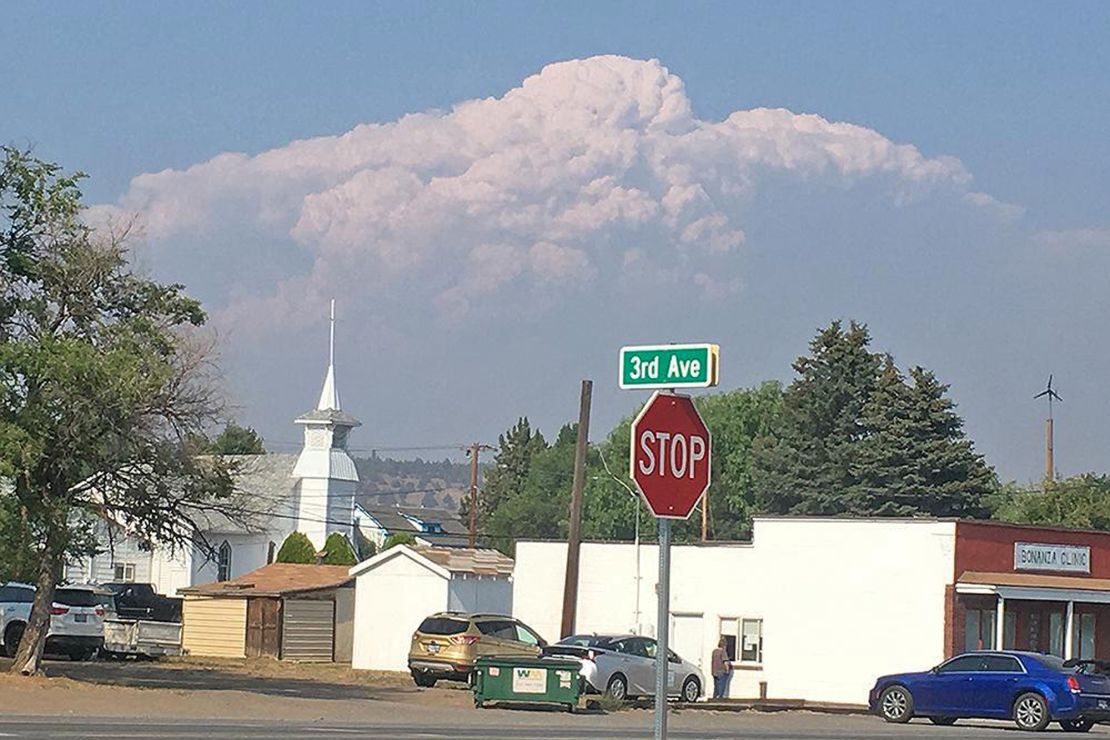
A fellow fire spokesman echoed the sentiment on their efforts to get control of the flames.
“There are some fires currently burning that … will only be extinguished by season-ending snowfall,” fire spokesman Daniel Omdal said, noting the fires are being fed by high amounts of combustible timber, bush and grass combined with limited resources to extinguish flames.
“The Bootleg Fire may be one of those fires,” Omdal told CNN.
CNN meteorologist Michael Guy says the weather forecast for this week doesn’t look promising for any assistance with containment of the Bootleg Fire. Temperatures will still be about 10 to 15 degrees above normal, the drought is ongoing, and there’s the added risk from lightning and strong winds from dry thunderstorms.
‘Ready to leave at a moment’s notice’
Lake County, Oregon, said in a release Sunday that it had used its emergency alert system to warn residents of increased activity on the Bootleg and Log Fires.
The county warned residents in the Monument Rock area that they were at evacuation “level 2,” it said.
“You should be ready to leave at a moment’s notice as this level indicates there is a significant danger to your area, and residents should either voluntarily relocate to a shelter or with family/friends outside of the affected area. Residents may have time to gather necessary items, but doing so is at their own risk,” its guidance reads.
Meantime, residents of Picture Rock Pass, the Ana Subdivision, the communities of Summer Lake and Paisley, and south of Paisley along Clover Flat Road to Moss Pass were warned to be aware of “increased fire hazards in the surrounding area.”
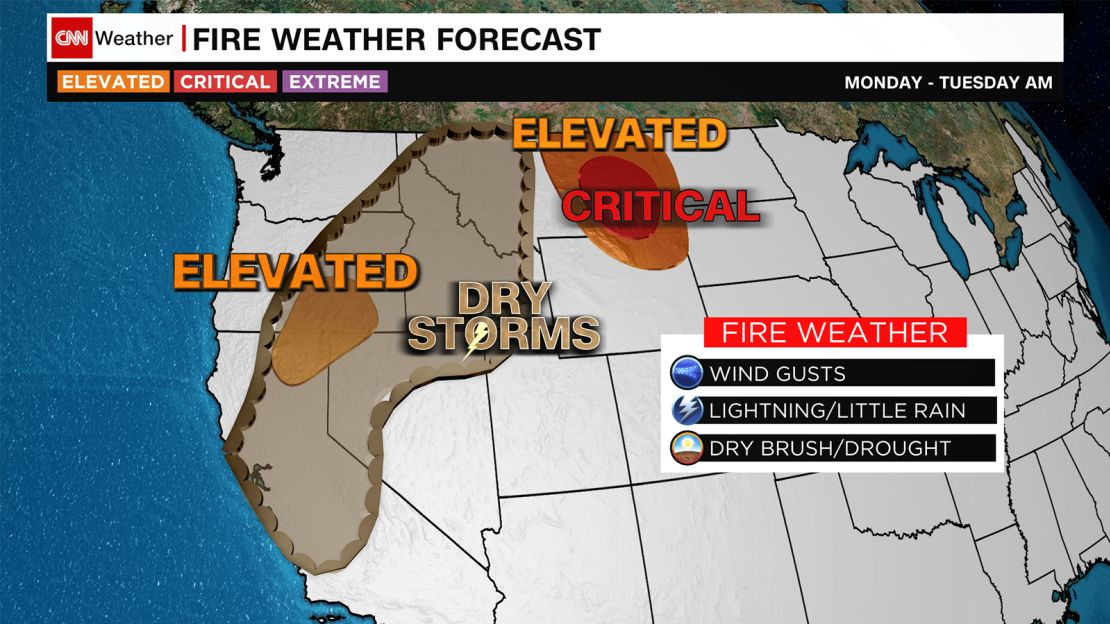
California wildfires have burned more than 200,000 acres this year
A total of 5,267 wildfires in California have burned more than 200,000 acres of land through July 18, according to CAL Fire. That is more than five times greater than last year’s record-breaking season when 39,041 acres of land were burned by 4,336 fires in the state to date.
Last year ended with more than 4.2 million acres burned, meaning these numbers can change drastically later in the year with the bulk of California’s traditional fire activity coming later in the summer and autumn.
There are currently nine large fires in California, which have burned over 175,000 acres of land, according to the National Interagency Fire Center.
About half of this year’s acres burned was from the Beckwourth Complex in Northern California. This complex is 82% contained as of Monday.
The Dixie Fire, burning in Northern California’s Butte County, has tripled in size to more than 30,000 acres and may have been sparked by equipment managed by Pacific Gas and Electric, according to the utility.
In a preliminary filing with the California Public Utilities Commission, PG&E detailed an outage alert from Tuesday, July 13, the same day the fire started. A responding utility worker found three blown fuses and a tree leaning into a pole, with a small fire on the ground near the base of the tree.
The fire was reported to authorities and California Fire and Protection sent aerial firefighters to douse the blaze, which had jumped from an initial estimate of 1-2 acres to 10-15, according to the report.
In the days since, the fire has grown exponentially, burning in “remote areas with limited access and steep terrain,” which is hampering access by ground crews, Cal Fire said. Nearly 2,000 fire personnel are fighting the blaze, and have contained about 15% of it, which has charred 30,074 acres.
PG&E has met with heavy criticism for the role its equipment was found to have played in a series of catastrophic blazes across the state – including the 2018 Camp Fire, the deadliest in state history.
Flight delays and cancellations
The wildfires have had a knock-on transport effect, with fuel supply issues causing flight cancellations at Bozeman Yellowstone International Airport in Montana, according to airport director Brian Sprenger.
“Each airline provides their own fuel through their providers but today, some have had their fuel delivery delayed due to increased fire suppression needs throughout the West that has diminished supply in Montana in an already tight fuel environment,” Sprenger said in an email to CNN Sunday.
“This is a challenge in various parts of the nation and particularly in areas of the country that have seen the economy and tourism recover more quickly. Another contributing factor is the shortage of transport drivers in the nation and high demand in the pipelines for other fuel types as well such as diesel and gasoline,” Sprenger said.
Sunday evening a total of nine flights scheduled to depart from Bozeman had been canceled on Sunday and Monday, according to the flight tracking website FlightAware.com.
On Monday morning, the Federal Aviation Administration (FAA) temporarily instituted a traffic management program for flights arriving at Denver International Airport due to low visibility caused by haze. Traffic was limited for less than an hour due to the haze, according to Denver airport spokesperson Alex Renteria, but weather across the nation such as thunderstorms and heavy winds led to hundreds of delays.
Renteria initially said hundreds of flights were delayed due to the wildfires but later said it was mostly due to weather across the United States.
There were 329 delayed flights within, into or out of the US at Denver International Airport with eight cancellations, according to FlightAware.
Correction: An earlier version of this story and headline did not include weather across the nation as one of the factors causing flight delays. Denver airport spokesperson Alex Renteria later clarified weather such as thunderstorms and heavy winds as the main reason.
CNN’s Raja Razek, Carma Hassan and Jenn Selva contributed to this report.
















